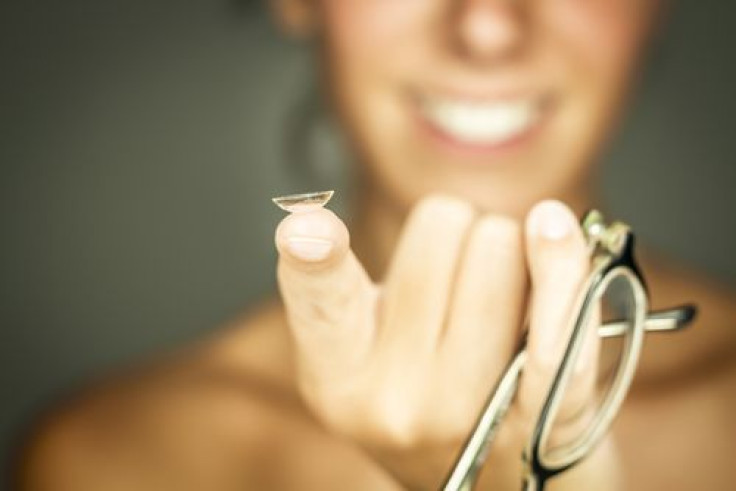Special Contact Lenses Treat Glaucoma, Eliminating Need For Eye Drops

Glaucoma is not only the leading cause of irreversible blindness around the world but one of the most challenging disorders to ensure patient compliance. Eye drops have long been the preferred method of medication, but they’re imperfect. Now researchers from Harvard Medical School Department of Ophthalmology, Boston Children's Hospital, and MIT have developed a contact lens that continuously administers glaucoma medication to its wearer for up to a month.
The advancement moves glaucoma treatment one step closer to making eye drops all but obsolete as a form of treatment for glaucoma — a lifelong disorder that gradually reduces a person’s sight due to intraocular pressure and currently carries no cure. And thanks to the imperceptible nature of its diffusion through the eye, the newly developed lens would offer none of the discomfort of traditional eye drops.
"In general, eye drops are an inefficient method of drug delivery that has notoriously poor patient adherence," Dr. Joseph Ciolino, Massachusetts eye and ear cornea specialist, and lead author of the study, said in a statement. “This contact lens design can potentially be used as a treatment for glaucoma and as a platform for other ocular drug delivery applications.”
The lens was constructed using materials cleared by the Food and Drug Administration (FDA), and employs a commonly used hydrogel to entomb the medication, latanoprost, which gets eluted (released) from polymer films in continual doses for up to a month. Rather than invasive eye drops, which were found in 2008 only to be refilled half the time after one year of treatment, the new lenses deliver the medication without much active patient participation.
"The lens we have developed is capable of delivering large amounts of drug at substantially constant rates over weeks to months," said Professor Daniel Kohane, director of the Laboratory for Biomaterials and Drug Delivery at Boston Children's Hospital, adding that patients without the need for correct lenses can wear non-refracting versions as well. “It may replace drops in some but not all indications. It will be particularly helpful in cases where patient compliance is poor.”
Admittedly, this barrier stands as one of the disorder’s greatest. Patient compliance has now been recognized as a constant challenge to the medical industry, as education about the disease and its treatment have become essential to maintaining adherence. According to one 2011 study, however, the challenges don’t rest merely on the individual.
“Although numerous socioeconomic factors are associated with poor adherence, these factors must be addressed at the societal level,” researchers wrote. “Maximizing patient adherence to medication has the potential to reduce the number of surgical interventions required to treat glaucoma, prevent unnecessary vision loss, and save the overall healthcare system money in the long run.”
While cataracts are far and away the leading cause of blindness around the world, emerging treatment options, alongside existing laser removal surgery, offer hope to the some 20 million people around the world who live with the degenerative clouding of the eye. Glaucoma sufferers have a less hopeful fate. While management options exist, reversing the tunneling effects of glaucoma are impossible. It is a disorder that depends on prevention, making the present researchers all the more hopeful a passive lens may offer newfound relief to the millions of sufferers worldwide.
"A non-invasive method of sustained ocular drug delivery could help patients adhere to the therapy necessary to maintain vision in diseases like glaucoma,” Ciolino said, “saving millions from preventable blindness.”
Source: Ciolino J, Stefanescu C, Ross A. In vivo performance of a drug-eluting contact lens to treat glaucoma for a month. Biomaterials. 2013.



























